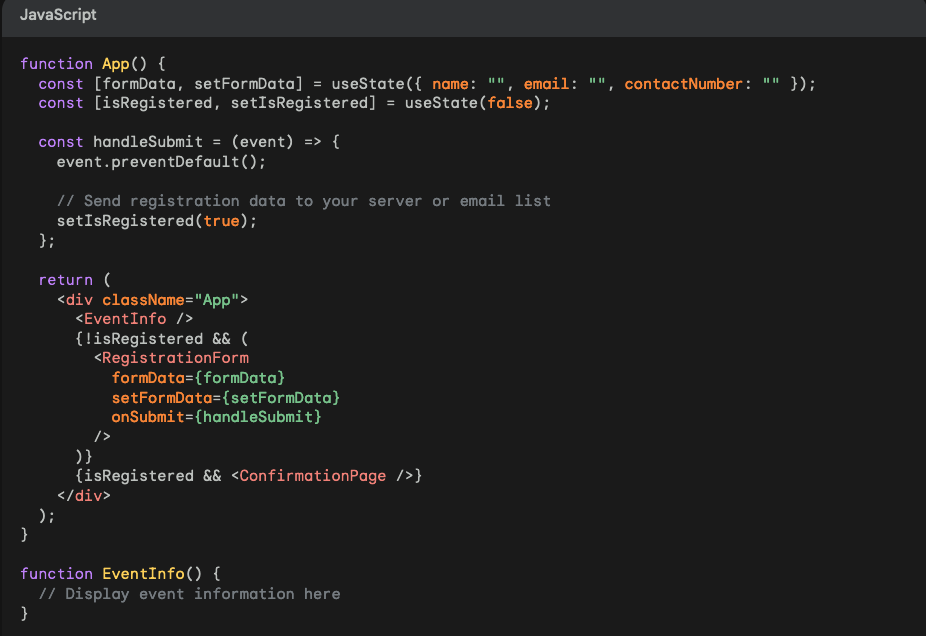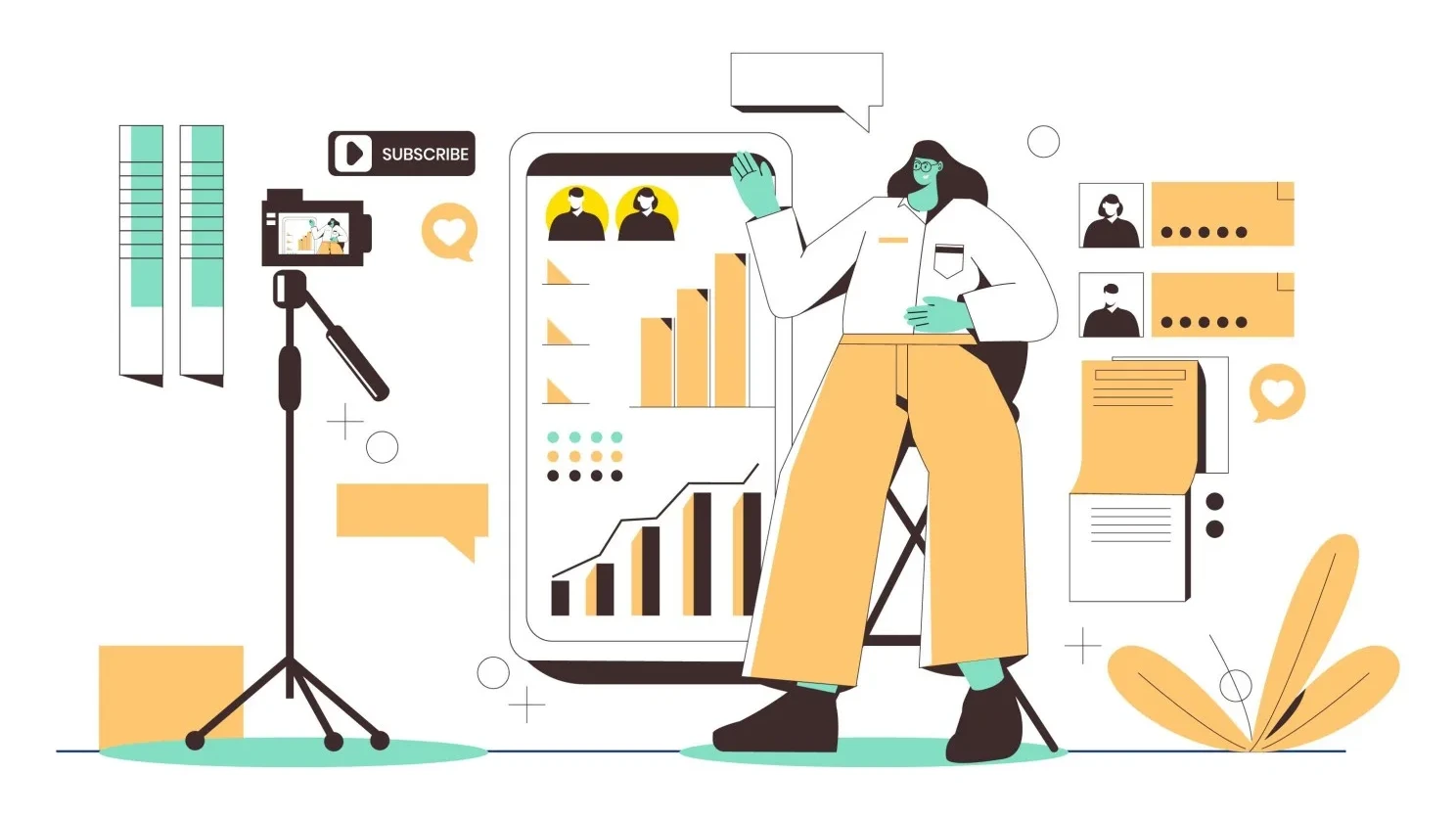It is your customer service, not a chatbot
If you come across an online chatbot that actually serves you well, please let me know. I’ve never used a chatbot that, supposedly should assist my inquiry as a customer, works in a meaningful way.
When online chatbots were introduced, they were programmed in a way when a conditional expression logic evaluated a condition to execute the block of instructions for whether the condition was true or false. For example, if a customer mentions trouble with a product, the chatbot, instead of trying to resolve the issue, might simply provide a list of FAQs with options to retrieve the information relevant to the question. Most of the chatbots are still working in a rule-based model.
The traditional software development based on the IF-THEN-ELSE conditional expression model has a limitation. The linearity assumptions evaluating between variables might not accurately represent real-world outcomes. The linear conditional expression model retrieves answers based on the pre-indexed information using keywords and phrases pointing to different fields and records. The binary outcome is always either true or false. Comparably, the machine learning model has more power to process the information using a graph-based model which has many branches and nodes to cluster the information in layers and networks. The ML’s computation naturally is more capable of evaluating complex cognitive issues.
Moving forward, there will likely be more chatbots powered by generative A.I., but it seems many commercial chatbots are still subpar in terms of performance. These chatbots are merely a static FAQ web page.
Furthermore, just because the voice of the chatbot is communicating for us with our customers, we cannot expect any mistake or inadequacy will be forgiven. Unfortunately, there are still many organizations using the chatbot to hide the insufficiency of the customer service. This is a classic “better-than-nothing” mindset. If your organization adds technology for the sake of appearance, then you won’t achieve a good outcome and even worse, you have successfully turned a customer inquiry into a customer’s complaint. From the customer’s side, it feels like waiting at your storefront in a vulnerable and helpless moment. Customers need help and empathy, not just a Q&A.

It’s not my intention to throw you all the technicalities. Let’s evaluate the whole scenario as a customer who is seeking assistance from a chatbot. Your customer is seeking help and this is the moment your customer has a big chance to make a business decision with you. Hence, the information that you should provide must meet the following criteria:
- Speedy and responsive.
- Informative.
- Clarity and conciseness.
- Not only helpful but also empathetic.
Considering the generative A.I., it’s hot but not new anymore. Why haven’t we seen a movement to use generative A.I. to enhance our chatbot capabilities? I believe cost is a concern, and I can break it down into three economic issues:
- Operation and management -- The cost of expertise and programming is different between the traditional conditional expression model and the ML model. The cost of customizing your own LLM is not as cheap as paying an off-the-shelf chatbot solution. The cost of the ongoing API license can range from hundreds to thousands of dollars (USD) per month.
- Data availability and scalability -- Concerning the availability of the data which you will use to train your own LLM, the preparation is not simple. The volume of data requires expertise to develop a structure of how the data should be tabulated and feed into the LLM. The time cost is substantial on the preparation work and also the cost for the expertise as well. This is not the traditional IT administration work that can be handled by your in-house IT team.
- Infrastructure -- The cost of infrastructure to support a capable A.I. as a bot to service your customers is quite an investment too. The robust infrastructure and cloud hosting will incur enormous costs based on the on-demand usage of the service bot.
Nonetheless, the economics will prove that because as the technological production scales up, the cost per unit decreases. I am sure the cost bottleneck will be resolved. Not to mention that the open-source options which you can use to lower the cost of developing your own LLM. In the end, it is your own effort and commitment to make better use of the technology.
Or, boiling down to the fundamental issue, it is whether or not your intention is to serve your customer better or you want to use the technology as a cover-up for your customer service deficiency.
My human thought of machine intelligence
I am a person who reads a lot of news feeds on my phone (I use primarily three apps – Feedly, Google News, and Artifact – to read content from various sources). I’ve also subscribed to multiple tech newsletters sent to my inbox everyday. News and articles about A.I. are very prevalent nowadays and the volume of AI-related content that I am consuming on a daily basis are more than I can digest. For years and decades, I’ve always been overloaded by the information of tech advancement. I do feel overkill. But my intake of tech content becomes a routine in my everyday life; glancing, reading, filtering, absorbing, inspiring, forgetting.
I shared the above experience with Bard and the A.I. replied me,
… It’s fascinating to hear your perspective on using AI as a casual user and the information overload you experience with AI-related news. Here are some thoughts based on your reflection … Ultimately, using AI effectively lies in conscious consumption and finding a balance that works for you. Don’t hesitate to adjust your information intake habits and leverage AI tools to make your experience more enriching and less overwhelming.
The experience of using A.I. Chatbot comes naturally for me as a casual user who occasionally types a few questions to seek answers. Philosophically, I always think of how A.I. is changing or substituting the tasks in our everyday lives? What is the journey of going through all these changes? Are things fading out one by one? People in my circle are talking about algorithms and how different algorithms are changing our lives. But have you ever seen an algorithm? How was it built? How does it work? Does it need a central processing unit to compute the instruction? Does it need a compiler to turn the codes into an executable program? Does it even have a line of code? An equation, a binary, etc, etc, etc. Are we embracing a blurring concept of A.I.?
Ten to twenty years ago working in the software development industry was a progressive career move. Nowadays I have people who tell me software development is a slavery task. Those lines of codes can be reproduced by A.I. with a prompt such as,
write me an react web app to take registration sign up for a networking event. i need to collect name, email, contact number. Then event is free of charge and no online payment is required
And then I received this from Bard (a partial screenshot),

Yes, with the setup of a right operating environment, the code is workable. I also know that learning to code in A.I. is quite different from the traditional software programming where the syntax of codes is more towards high-level programming logic vs. the mathematics theorem in the scientific field. Advice from a leader in the A.I. industry who suggested reading a lot of scientific papers if a person wants to start a tech career in A.I. I also read advice from a hiring manager who said the people who applied for the A.I. jobs were the one who read piles of scientific papers for fun. It sounds like in order to get into the A.I. tech field you have to compete with the people whose long-life interest or hobby is the hardcore science. In our society, the way we, the majority, are brought up to pursue knowledge and intellectual development isn’t really in line with the path to pursue achievement in advanced science. This is just not common.
We know there are seven stages of A.I. and we are at stage one called the weak A.I. The rest of the stages are the concepts that we believe one day we will be able to achieve. So, let’s say we will stay with the weak A.I. for five to ten years living in a way of asking questions and receiving answers from a chatbot. How significant in your life is doing this machine Q&A way of living?

I am in the creative agency business. In my field, people are use A.I. to generate visual references. Some even use it to create a second or third option for fulfilling the customer’s request for proposal. The tasks of doing this machine generated or assisted imagery are effective particularly in the repetitive tasks like removing the image background, manipulating objects, generating scene and mood, etc. But the value as a business proposal or solution remains low-end. How significant are these assembly-line works in your business? If you are in the creative economy, you hire creators to create and to embrace the creation process. You should know the differences between a creator and an operator. The habituated routine does not embed with the creativity. It is garbage-in garbage-out. The value is subpar.
Should we embrace A.I.? Absolutely! It has changed the way we acquire information. It is an effective tool that validates our ideas during the creation process. It stimulates human thought without exhausting human resources. We should embrace A.I. in our creation process but not take the output for granted, not using it as a cheat code. Human intelligence has better dynamics than the machine, at least for now and probably for the next five to ten years. Knowing how to optimize our production using narrow-machine intelligence can gain value in productivity. If you or your organization are fulfilling just the habituated goal, then you don’t need five to ten years to be outpaced by your competitors. It’s not that you lost the game because you are not advanced. It is because you are too habituated to take things for granted.
Specially thank to my co-author – Google Bard – which offers me views and help me to validate my ideas while crafting this article. Last but not least, Bard has this endnote to share with you,
Remember, AI is a powerful tool, but it’s just that: a tool. The value lies in how humans choose to use it and ensure it serves to enrich our lives without diminishing our creativity and critical thinking abilities.
The missing manual of marketing
Once you are on your train of thought, you just want to grasp it and let the ideas flow. “Missing Manual” is always my favorite topic because there is always something missing when we are sharing an idea. This missing manual is a follow-up for my last article “Reflection.”
Digital marketing should be analytical because of its metrics model. Almost every behavior can be scientifically evaluated from a click to a timeline, a path or a series of user flows, scrolls or taps on different documents, files, topics, responses or actions, etc etc. Many organizations ignore this gem in their business practice by neglecting the importance of investing in the analytics resources. In my 30 years of practice, I’ve not seen any meaningful team or department, task force, whatever you want to call it in your organization within a marketing setup which will give attention to the analytics. And I am pretty much sure every time when the term “analytics” is mentioned, people think that it is Google Analytics. The success of a branded platform becomes the most misused acronym in the marketing world.
To learn analytics, you need patience. It also requires basic coding skills to deal with adding a small trunk of code to connect a website or app to an analytics application. You can tweak the code to suit different purposes. But this is not the most important part. The most important part of analytics is your metrics model. How do you use different metrics to measure a series of actions that mean value in your marketing?
Have you ever seen a metrics model in your organization?
Actually not only the brand sides have neglected the practice of metrics, but also the agency sides are ignoring it as well. Reason is that creating a metrics model is tedious and there is no assigned responsibility in a typical workflow for this task. The perceived value of practicing analytics is not economic nor commercial as well. The management may think instead of making marketing complicated, why not betting on the next sexy idea and make people like it? This nags you all the time especially when everything is urgent, snackable, bite-size, fast… Honestly, there isn’t anything wrong to pursue vanity value in marketing. You just need to know that vanity value won’t last long and the benefit that you gain is insignificant in the whole marketing journey.
To pursue any improvement in marketing, you need more than your passion. I can say it is at the addiction level or even the obsession that keeps you focused on the journey. Recently I’ve decided to start a content creator team. The creators that I am working with are all professional designers. I believe the creators who can design have better tooling and creative skill. But most of the designers have a common problem – they visualize their mental space without seeing a journey. Let me put it in this way, if we draw a journey, it can be a line between two dots, or a curve going through different dots, what about a circular journey? a loop, a ring, layers, dimensions, etc. Planning a journey can be an exhaustive process even though it is just between two points. Having a good metrics model helps you to craft your marketing journey strategically with mission and goal. In my experience, adding a scientific checkpoint in the wild-wide creative journey can definitely enhance the creation process. But unlike the conventional model – measure and then improve -, we can create the metrics model before rather than after.

Business love vanity
Let’s start with the vanity metrics. Vanity metrics like a million views on a web page, millions of followers, thousands of shares, etc., these numbers will only go up every time you see it over a cumulative period. We all know the perceived value of the vanity metrics are always positive but the latent meaning tells the other story. Most of the companies like the vanity metrics because they are easy to collect and always in a growing trend. The vanity metrics are always your first insight bucket. It tells you things that you know you know.
Then, you move to the second bucket of your metrics. The second bucket analyzes more depth of the activities while the first bucket tabulates the counts only. You can have the sub-buckets according to your content types of each creator media, typically Instagram or TikTok. For example, you can analyze the viewers’ behavior of your content by separating the geolocations of the viewers correlated to the average watch time of the videos, etc. You can segment your content by episodes and chapters based on tiers of average watch time of the viewers, etc. In your second bucket, it is your multivariate analysis. Then the third bucket is your creative pulse. You benchmark and profile the creative elements of the reference content, identify the themes and styles, scenes and characters, etc.
Every metrics is a record of a behavior
Now I believe you know what I want. I want to visualize a journey, an experience, how people are engaged, behave and respond with actions and interactions. In short, is your content marketing plan actually talking to the audience? Knowing that every measurement unit in a metrics table is essentially a record of a behavior pattern such as people like your content, follow your content, comment or share, dropout from a particular segment of the content, growth of average view time during a particular period or episodes, etc. , all of these mean a lot to for your marketing strategy.
Did I just say we should create the metrics model before the content rather than after? Yes indeed. Since all the variables in the first bucket of the metrics model are available to all of us, we can select, collate, and compile our baseline. Then depending on your content plan, you customize your own bucket that fits your content. For example, if you don’t produce video, then you can drop the AWT (average watch time) variable. You create the content with what you want to achieve according to your metrics table. And then while you are planning your content strategy, you know how each chapter and episode will be measured, evaluated, and eventually created. I find this methodology useful especially when you are planning an episode-driven content plan.
You've done enough shouting
The world’s economy has been bumpy in the last 30 years. Financial crises, recession, of course the pandemics, wars, breakdown of the supply chain, technological disruption, etc., during the tough time, our marketing has done a lot of shouting to cry for sales. The influencer marketing takes the shouting to another level. The urging sense makes us less and less analytical. We also read something about the diminishing attention span. Actually, the diminishing attention span applies to all of us, not only the buy-side, but also the sellers who want to save time and sell fast before the time is running out. In reality, there is never a “deadline” standing in front of us.
Let’s be analytical.


